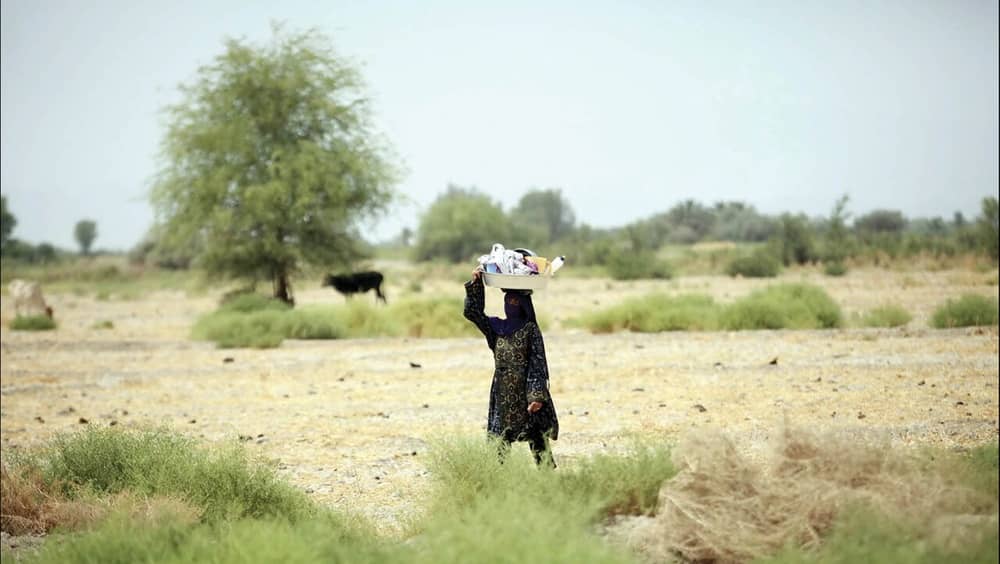
Three-minute read
On November 23, 2025, the state-run daily Asia reported a new term for a rapidly intensifying reality: “water refugees.” According to the paper, an accelerating wave of internal migration is pushing families from drought-stricken provinces toward the greener Caspian coast—particularly Gilan and Mazandaran. Entire neighborhoods, it wrote, are now crowded with newcomers fleeing dried wells, dust storms, and the collapse of local agriculture.
In most countries, internal relocation is a social challenge. In Iran’s political context, it is a warning flare: a regime unable to guarantee basic survival in the interior is watching parts of the population vote with their feet, undermining the political geography it has relied on for decades.
A New Demographic Frontline
Although “water refugees” is a new phrase in Iranian state media, the phenomenon itself has been flagged by international analysts for years. The Migration Policy Institute noted in 2024 that Iran’s deepening drought is pushing internal movements from the central plateau toward the northern provinces, where rainfall is higher and soils remain more fertile.
But Asia’s reporting indicates a sharp acceleration. Northern communities now expect a population surge in the “near future,” raising concerns about housing, land use, and infrastructure. This is happening simultaneously with record drops in water availability: in the province of Kurdistan—historically one of Iran’s wettest—only 38 percent of reservoir capacity is full, with officials describing a 25-point decline in storage.
Even if the true number is lower, the statement itself reveals the extremity of the crisis or the extremity of the spin. Either way, official data almost always understates severity. Independent hydrologists have long warned that Iran extracts 80–100 percent of its renewable freshwater annually—placing it among the world’s most water-stressed states.
#Iran’s Water, Fuel and Food Crises Reveal a Regime Out of Optionshttps://t.co/HrQZVfjJ3w
— NCRI-FAC (@iran_policy) November 22, 2025
Approaching “Day Zero”
International reporting is now blunt. In mid-November, The National Interest wrote that 16 million Iranians are at risk of running out of drinking water due to drying reservoirs around Tehran. It added that authorities have prepared preliminary evacuation scenarios for parts of the capital if winter rainfall fails again.
This was not dismissed domestically. On November 21, Nasrollah Pejmanfar, chair of the parliament’s Article 90 Commission, confirmed “severe concern” about water rationing in Tehran and Mashhad. He acknowledged that the Doosti Dam—once a major source for Mashhad—had effectively dried up by late November, while surrounding dams were near zero. Mashhad’s water supply, he said, now depends almost entirely on wells, accelerating land subsidence and degrading water quality.
Simultaneously, the economic outlet EqtesadNews warned that Iran is “on the verge of water bankruptcy” and that Tehran could face a “Day Zero” scenario if mismanagement continues—an emergency concept used globally when municipal water systems approach full failure.
Notably, MP Alireza Nesari insists that Iran’s crisis is primarily a governance failure—not a meteorological one. The real issue, he said, is decades of poorly planned dams, aquifer abuse, and unmonitored extraction.
#Iran's Water Bankruptcy: A Crisis Manufactured by IRGC Corruption, Not Climatehttps://t.co/R173goyXOd
— NCRI-FAC (@iran_policy) November 14, 2025
The Geography of Collapse
Why does migration matter politically? Because it reveals the uneven spatial collapse of the Iranian state.
Interior provinces—from Isfahan to Yazd to Sistan and Baluchestan—are experiencing simultaneous water loss, agricultural failure, and dust storms. Many of these regions historically buffered the regime from large-scale dissent: rural loyalty, or at least rural quietism, was a stabilizing factor.
That buffer is thinning. When villages empty and younger families head north, the state loses territorial depth. It also faces a credibility crisis: it cannot claim that decades of “development” plans brought prosperity to the interior when people are abandoning those areas simply to secure drinking water.
The destination zones—Gilan and Mazandaran—are not prepared for this. They have better rainfall but fragile ecosystems, limited wastewater systems, and chronic land-use disputes. Environmentalists in Gilan have already warned that even modest increases in population strain local rivers and groundwater. Add tens of thousands of newcomers, and a “safer” region becomes a stress zone of its own.
#Iran’s Stateless Children: The Lost Voices of Baluchestanhttps://t.co/d1WprAmFjE
— NCRI-FAC (@iran_policy) October 7, 2025
The Regime’s Deadlock
In the coming months, three dynamics are especially dangerous:
1. Northern saturation: If Gilan and Mazandaran face water stress of their own, the last “safe” zones collapse into conflict over land and supply.
2. Emptying interior provinces: Depopulation undermines the regime’s stability and removes the rural quietism that once helped stabilize it.
3. Capital fragility: Any movement toward rationing in Tehran—let alone evacuation scenarios—could trigger unrest that no coercive strategy can fully contain.
The spread of “water refugees” is not a side story. It is a structural indictment of Iran’s political economy. The clerical dictatorship can ration water, reroute rivers, drill new wells, and suppress protest—but it cannot convince citizens that the system is sustainable. Once people begin fleeing for water, a state’s crisis is no longer environmental. It is existential.

